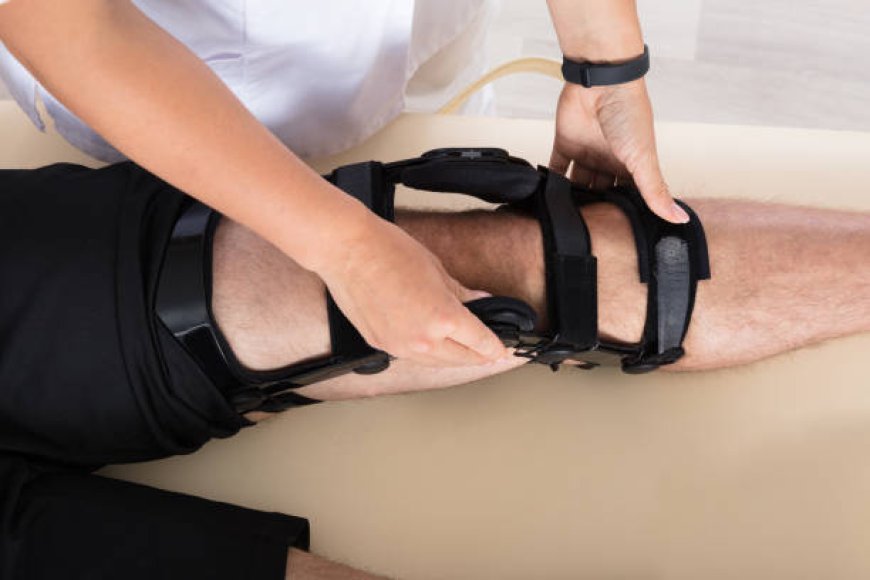Tips for Caring for Your Knee Support Brace
Maximize the benefits of your knee support brace! Clean it often, check for damage, and make sure it fits snugly. Taking care of your brace helps you recover faster and stay comfortable during your activities.

A Knee Support Brace can be an invaluable tool in your recovery process, providing the necessary support and stability to help you heal from injuries or surgeries. However, to ensure its effectiveness and longevity, proper care and maintenance are essential. Here are some helpful tips for caring for your knee support brace.
1. Understand Your Brace
Before you start caring for your knee support brace, it’s important to understand its specific features and materials. Different braces are designed for various purposes, such as stabilization, compression, or immobilization. Familiarize yourself with the manufacturer’s instructions for cleaning, usage, and storage. Knowing the specifics will help you maintain the brace properly and ensure it functions as intended.
2. Regular Cleaning
Keeping your knee support brace clean is crucial for both hygiene and functionality. Sweat, dirt, and bacteria can accumulate on the brace, potentially causing skin irritation or infections. Here are some cleaning tips:
-
Hand Wash: Most knee braces can be hand washed in cold or lukewarm water with a mild detergent. Avoid using bleach or harsh chemicals, as they may damage the materials.
-
Rinse Thoroughly: After washing, rinse the brace thoroughly to remove any soap residue. Soap left on the fabric can irritate your skin.
-
Air Dry: Avoid using a dryer, as high heat can warp or damage the brace. Instead, lay it flat on a clean towel and allow it to air dry completely before putting it back on.
3. Check for Damage
Regularly inspect your knee support brace for signs of wear and tear. Look for frayed straps, weakened seams, or damaged hinges (if applicable). If you notice any issues, address them promptly. Small issues can often be fixed with sewing, while more significant damage may require replacing the brace entirely. Using a damaged brace can lead to improper support, which may hinder your recovery.
4. Adjust for Comfort
A properly fitted knee support brace should feel snug but not overly tight. If you experience discomfort, it may be time to adjust the straps or padding. Many braces come with adjustable straps for this purpose. Ensure that the brace is positioned correctly on your knee, as improper placement can lead to discomfort and reduced effectiveness.
-
Positioning: The brace should cover the knee joint adequately, with the center of the brace aligning with the kneecap. Follow any specific guidelines provided by your healthcare professional.
-
Strap Tightness: When adjusting the straps, ensure they are tight enough to provide support but not so tight that they restrict blood flow. You should be able to fit a finger between the strap and your skin comfortably.
5. Use as Directed
It's essential to use your knee support brace as directed by your healthcare provider. Overusing or misusing the brace can lead to dependency and weaken the muscles around your knee joint. Here are some usage tips:
-
Follow Instructions: Adhere to the recommended duration of wear. If your doctor or physical therapist advises wearing the brace only during specific activities, be sure to follow those guidelines.
-
Combine with Rehabilitation: A knee support brace is often most effective when used in conjunction with rehabilitation exercises. Engage in any prescribed physical therapy programs to strengthen the muscles surrounding your knee and improve overall stability.
6. Storage Considerations
When you’re not using your knee support brace, proper storage is essential to maintain its shape and integrity. Here are some storage tips:
-
Keep it Dry: Store the brace in a cool, dry place away from direct sunlight. Excessive heat and moisture can degrade materials over time.
-
Avoid Heavy Objects: Do not place heavy objects on top of the brace, as this can distort its shape. Instead, keep it in a designated area where it won’t be crushed or bent.
7. Stay Aware of Skin Health
Wearing a knee support brace can sometimes cause skin issues, such as irritation or chafing. To prevent these problems:
-
Use Padding: Consider using additional padding or sleeves to protect your skin from direct contact with the brace. This is particularly important if you wear the brace for extended periods.
-
Monitor Skin Condition: Regularly check your skin for any signs of irritation, redness, or rash. If you notice any issues, consult your healthcare provider for advice on managing the symptoms.
8. Consult Your Healthcare Provider
Finally, always maintain open communication with your healthcare provider regarding your knee support brace. If you have any concerns about its fit, comfort, or effectiveness, don’t hesitate to reach out for guidance. They can provide valuable insights and may recommend adjustments or alternative options if necessary.
Conclusion
Caring for your knee support brace is vital for ensuring its longevity and effectiveness in aiding your recovery. By understanding your brace, maintaining cleanliness, checking for damage, and using it as directed, you can maximize its benefits. Additionally, being proactive about skin health and consulting your healthcare provider will further enhance your experience. Remember, your knee support brace is a tool to aid your healing journey, and taking proper care of it will help you achieve the best possible outcomes.
What's Your Reaction?














![Noots Focus Reviews [Truth Exposed 2025]!](https://news.bangboxonline.com/uploads/images/202501/image_430x256_678e3b94881a1.jpg)
![Vivalis Male Enhancement: The Must-Know Ingredients [2025 Update]](https://news.bangboxonline.com/uploads/images/202501/image_430x256_678e3b54e396c.jpg)








